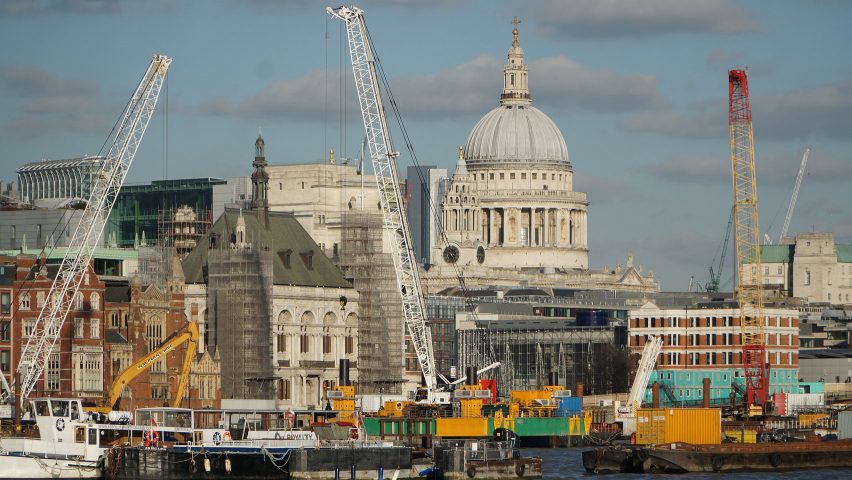
London's mayor calls on architects to design for a circular economy
The mayor of London's office has published a document to help property developers and architects to design for a circular economy, with ideas such as rental furnishing and using blockchain technology.
Called Design for a Circular Economy, the document was published yesterday with a call to action for London's architects, along with a guide to the terminology around the concept.
In a circular economy, waste is designed out and materials are kept in circulation for as long as possible by being repaired, recycled or remade, rather than thrown away and new raw materials extracted to replace them.
With architecture, this extends to the practice of reusing and adapting buildings rather than demolishing them.
"This is a call to action to everyone"
According to the "primer" document, 54 per cent of the waste generated in London ever year is caused by the built environment, which consumes 400 million tonnes of material in the same period.
"We can no longer ignore the impact our individual and collective behaviours have on our environment or society," architect Sunand Prasad said in the document.
"We are now seeing the consequences of our economic system, whether that is record high temperatures, fuel poverty, or air pollution in our city."
Prasad, who co-founded architecture firm Penoyre & Prasad and is a design advocate for the mayor of London, added: "This is a call to action to everyone in the design, construction and property sectors to start embracing circular economy principles as standard practice."
Examples of circular design cited by Prasad in the document include using blockchain technology to track materials, like a passport, and carpets that occupiers can rent from manufacturers rather than own.
If furnishing manufacturers retain ownership of their products, Prasad suggested, they will be more likely to ensure they are long-lasting and easy to repair.
New developments must design for reuse
The primer states that going forward, all new developments in the UK capital will need to submit a circular economy statement, laying out how recycled materials can be used or new materials specified so they can be reused, and how construction waste will be cut down.
Buildings will also need to prove that they offer spaces for occupants to exchange unwanted materials with each other, and provide enough space for recycling collections.
Refurbishing buildings will be encouraged, and new developments will need to prove they are built to last.
The Design for a Circular Economy guide includes a glossary of circular-economy terms, a breakdown of its essential tenants, and decision trees for developers to use when commissioning projects.
Circular economy will encourage "good growth"
The mayor's office also highlighted the financial benefits of a circular economy in the document.
Reducing construction waste will save projects money, the document stresses, and flexible buildings that can be adapted over their lifetime will retain their value.
According to the London Waste and Recycling Board, if London successfully adopts the principals of a circular economy it could contribute up to £5 billion in growth and 12,000 new jobs in the city by 2036.
This month Dutch designer Richard Hutten warned that businesses who do not embrace the circular economy will fail, and the sailor Ellen MacArthur has set up a programme to persuade 20 million designers to use a circular model in their work.
Main image is by Awsloley from Pixabay.